Karen Treiger's Blog, page 2
February 9, 2021
FASCISM PART II
 Cartoon by Carlson 2017; from article by Matt Rothschild in The Cap Times 8/14/18
Cartoon by Carlson 2017; from article by Matt Rothschild in The Cap Times 8/14/18Propaganda, lies, conspiracy theories, fear and hate – these are some of the tools a fascist politician has at his disposal. One of the favorites in the fascist playbook is to engage in a loud anticorruption campaign. “Drain the Swamp,” is not new. Hitler set out to make democracy and corruption as synonymous as Jews and Bolsheviks and ironically did so by creating one of the most corrupt governments in history. Hitler’s Mein Kampf sets it out for all to read: “[T]he aim of propaganda is to replace reasoned argument in the public sphere with irrational fears and passions.” (Stanley 55) Stanley jumps from Hitler to Steve Bannon, quoting Bannon’s comment: “We got elected on Drain the Swamp, Lock Her Up, Build a Wall . . This was pure anger. Anger and fear is what gets people to the polls.” (Stanley 55)
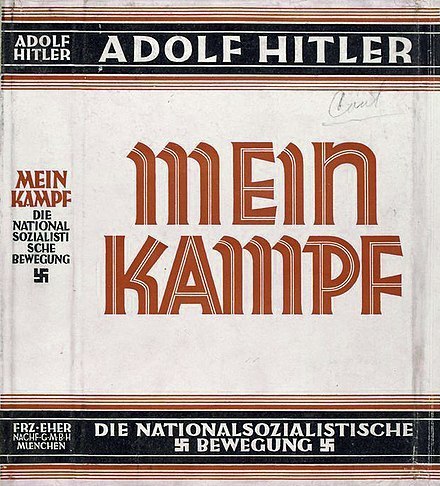 Photo from Wikipedia
Photo from Wikipedia We’ve all watched as repeated lies have turned into perceived truths by millions of American citizens (e.g., Stop the Steal). Stanley describes the use of repeated lies as a way to destroy the “information space. A fascist leader can replace truth with power, ultimately lying without consequences.” (Stanley 57) Reality disappears and “fake news” takes over the public square.
So why are we humans susceptible to the fascist leader’s tactics? Stanley sees the pull of fascist politics as “powerful.” “It simplifies existence,” he writes, and “gives us an object, a ‘them’ whose supposed laziness highlights our own virtue and discipline, encourages us to identify with a forceful leader who helps us make sense of the world, whose bluntness regarding the ‘undeserving’ people in the world is refreshing. If democracy looks like a successful business, if the CEO is tough-talking and cares little for democratic institutions, even denigrates them, so much the better. Fascist politics preys on the human frailty that makes our own suffering seem bearable if we know that those we look down upon are being made to suffer more.” (Stanley, 183)
Another way a fascist politician succeed is by moving the goalposts of “normal.” How many times have we worried that the horrors we hear on TV and read in the papers have become the “new normal.” Over time, we’ve become desensitized to the awful things that we have heard in the public square and disturbing and even horrifying policies and government actions we have witnessed over the past four years. The transition from democracy to fascism is a slow drip of normalizing the once unthinkable.
Stanley raises his grandmother’s experience in Nazi Germany as an example of this. In 1936, Stanley’s grandfather was arrested and taken to a concentration camp. In her 1957 memoir, The Unforgotten (which is unfortunately out of print), Ilse Stanley explains that her husband was arrested because he was a “criminal” with two court fines for traffic violations. (Stanley 112) Ilse began a clandestine mission, disguised as a Nazi social worker, to rescue hundreds of Jewish prisoners from the concentration camp, Sachensanhausen. She would tell her Jewish friends in Berlin what was happening behind the barbed wire fence and that they should immediately leave Germany. But these Jews didn’t believe they were in danger. “She recounts,” writes Stanley, “the disparity between the extremes she witnessed in the concentration camp and the denials of the seriousness of the situation, its normalization, by the Jewish community of Berlin.” (Stanley 189)
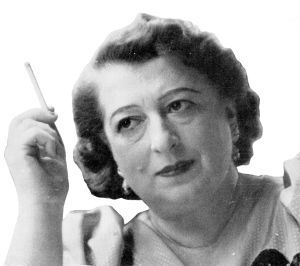 Ilse Stanley
Ilse StanleyWhat the Jews experienced in Germany and what we Americans experienced (and are experiencing) during the Trump era is a type of normalization that transforms “the morally extraordinary into the ordinary. It makes us able to tolerate what was once intolerable by making it seem as if this is the way things have always been.” (190)
I want to thank Jason Stanley for allowing me to better understand how fascist politicians can co-opt an entire society. It is a frightening reality that we must guard against.
In his most recent article – Movie at the Ellipse: A Study in Fascist Propaganda, published on February 4th in Just Security, Stanley argues all the theory came together on January 6. Analyzing a video shown at the Trump rally outside the White House, which was followed by the shocking attack on the United States Congress, Stanley unveils Trump fascist propaganda. This dethroned leader is using fascist tactics to retain power and keep his millions of adoring followers from slipping out of his iron grasp.
Here’s the video from the rally, but please read Stanley’s analysis. It makes it understandable and terrifying:
I post this blog just a few minutes before the United States Senate is to begin their second trial of impeachment of Donald Trump.
After you view the video and read the piece, post comments on the blog. Want to hear what you think.
February 8, 2021
Hitler, Trump and other Fascist Icons
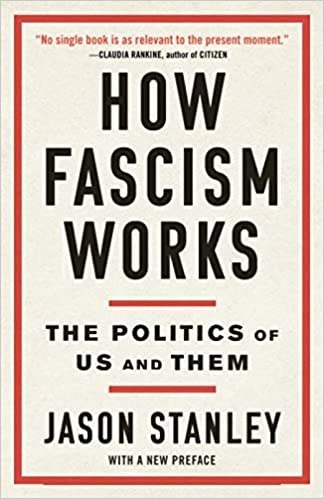
What would you do if some friends gave you a book titled – How Fascism Works: The Politics of Us and Them as a gift for your 60th birthday?
Perhaps you would put the book on a bookshelf in the back room where it can collect dust. Well, I decided that this was just the book for my 60th year. It was time to better understand how leaders like Hitler and Trump came to power and how they convinced millions to follow them. So, I got comfortable, pulled on a cozy blanket and cracked the cover of the book, written by Jason Stanley. What I found was that I fell off a steep cliff of fascist politics and politicians.
In two blog posts, I’ll share some of what I learned from Dr. Stanley. I suggest you read to end of the second blog post, as there you will find a link to Dr. Stanley’s February 4, 2021 article published by Just Security. It brings everything he discusses in the book home to what happened on January 6th in our nation’s capital. The February 4th piece focuses on a video shown at the Trump rally in front of the White House on that fateful day. As I watched the video and read the article, a chill went down my spine and honestly, it has left me with a pit in my stomach.
****
We begin this journey into fascism with a quote from the end of Stanley’s book.
The mechanisms of fascist politics all build on and support one another. They weave a myth of a distinction between ‘us’ and ‘them,’ based in a romanticized fictional past featuring ‘us’ and no ‘them,’ and supported by a resentment for a corrupt liberal elite, who take our hard-earned money and threaten our traditions. ‘They’ are lazy criminals on whom freedom would mask their destructive goals with the language of liberalism, or ‘social justice,’ and are out to destroy our culture and traditions and make ‘us’ weak. ‘We’ are industrious and law-abiding, having earned our freedom through work; ‘they’ are lazy, perverse, corrupt, and decadent. Fascist politics traffics in delusions that create these kinds of false distinctions between ‘us’ and ‘them,’ regardless of obvious realities.” (187)
Fascism begins with a false myth of a nation’s past. To elucidate this point, Stanley quotes from one of our favorite fascists – Benito Mussolini: “We have created our myth. The myth is a faith, a passion. It is not necessary for it to be a reality . . . Our myth is the nation, our myth is the greatness of the nation!” (Stanley 5) The fascist leader spins a false history of the great nation which was great and now has fallen. The point of this myth is to replace “facts with power.” (Stanley 21)
At the center of this glorious mythical past – the source of all power and moral authority – is the father, the leader of the family and the nation. Fathers are the ones who bring the country to glory. The role of the all-powerful father is starkly juxtaposed to the submissive mother. These lines were drawn clearly in Nazi propaganda. For example, Gregor Strasser, the Nazi propaganda master in the 1920’s made clear that “for a man, military service is the most profound and valuable form of participation – for the woman it is motherhood!” (Stanley 6-7) The TV series The High Castle, which depicts the dystopian world in which Germany and Japan were victorious in World War II, highlights this hierarchy of roles. It’s clear in the series that women are to be mothers and are to give birth to Aryan children for the glory of the Reich.
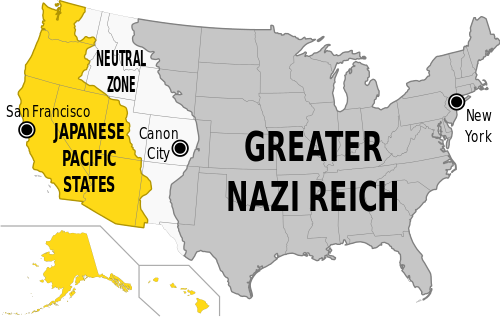
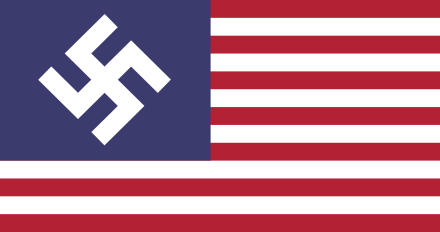
Feminism and feminists were enemies of the Nazis regime. “The women’s movement,” Stanley explains, “was part of an international Jewish conspiracy to subvert the German family and thus destroy the German race. . . . [the movement was] encouraging women to assert their economic independence and to neglect their proper task of producing children.” (Stanley 43-44)
Perpetuating the myth of the past where men were king and, if they just worked hard, they would succeed, creates expectations that cannot be met in the present. “When these expectations are not met,” Stanley contends, “it feels like victimhood.” (Stanley 101)
This idea helped me understand how so many white men in America today feel that they are the victims. The falsehoods about the glorious past of white men in America created expectations that can’t be met and now they feel victimized and angry. The fascist politician takes all that anger (that he created) and provides a place to put it – on the “other.” The “other” can be Jews, immigrants, people of different races or ethnic origins, whatever works. But the message to the target audience is that it’s not your fault that you don’t live in the glorious present of patriarchal dominance. The “other” is at fault and they must be put in their place or, better yet, evicted from the country. If this could happen, all would be right in the world.
The “us” not “them” approach comes right out of the fascist playbook. The “us” deserve more because we are hardworking Aryans/Americans/Hungarians, while the “them” are lazy criminals who have no work ethic and live off of our hard work. Intense labor is the answer for these lazy parasites – Arbeit Macht Frei (Work Makes you Free) – as the sign over Auschwitz declares. “In Nazi ideology,” Stanley writes, “Jews were lazy, corrupt criminals who spent their time scheming to take the money of hardworking Aryans, a job that was facilitated by the state.” (Stanley 157-58)

This theory, that work is the ultimate value, leads directly to the idea that if you are lazy (like the Jews) or unable to work (like the disabled), you are of no value to society. This warped theory ultimately led to the murder of mentally and physically disabled Germans and the murder of six million Jews.
Tomorrow, Part II, will describe the tools a fascist politician has at his disposal, why this ideology is appealing, and will conclude with the promised link.
February 1, 2021
Albert Bourla Speaks on Holocaust Remembrance Day
 Albert Bourla
Albert BourlaI read many speeches and articles related to International Holocaust Remembrance Day, but the one, given by Albert Bourla, the CEO of Pfizer, hit me the hardest. He had never spoken publicly about his family’s story. I found it so powerful that I decided to share it with all of you. Thank you to my Mechuten, Amy Wolf for sharing it with me.
Warning, you may cry.
*******
My Family’s Story: Why We Remember
Albert Bourla, January 29, 2021
This week, as we do every year, we commemorated International Holocaust Remembrance Day so that the stories of the victims and survivors are never forgotten. Yesterday, I was deeply honored to join the Sephardic Heritage International in DC’s Annual Congressional Holocaust Commemoration to share my family’s story in connection with the Holocaust.
Remembrance. It’s this word, perhaps more than any other, that inspired me to share my parents’ story. That’s because I recognize how fortunate I am that my parents shared their stories with me and the rest of our family.
Many Holocaust survivors never spoke to their children of the horrors they endured because it was too painful. But we talked about it a great deal in my family. Growing up in Thessaloniki, Greece, we would get together with our cousins on the weekends, and my parents, aunts and uncles would often share their stories.
They did this because they wanted us to remember. To remember all the lives that were lost. To remember what can happen when the virus of evil is allowed to spread unchecked. But, most important, to remember the value of a human life.
You see, when my parents spoke of the Holocaust, they never spoke of anger or revenge. They didn’t teach us to hate those who did this to our family and friends. Instead they spoke of how lucky they were to be alive … and how we all needed to build on that feeling, celebrate life and move forward. Hatred would only stand in the way.
So, in that spirit, I’m here to share the story of Mois and Sara Bourla, my beloved parents.
Our ancestors had fled Spain in the late 15th century, after King Ferdinand and Queen Isabella issued the Alhambra Decree, which mandated that all Spanish Jews either convert to Catholicism or be expelled from the country. They eventually settled in the Ottoman Thessaloniki, which later became part of Greece following its liberation from the Ottoman Empire in 1912.
Before Hitler began his march through Europe, there was a thriving Sephardic Jewish community in Thessaloniki. So much so that it was known as “La Madre de Israel” or “The Mother of Israel.” Within a week of the occupation, however, the Germans had arrested the Jewish leadership, evicted hundreds of Jewish families and confiscated their apartments. And it took them less than three years to accomplish their goal of exterminating the community. When the Germans invaded Greece, there were approximately 50,000 Jews living in the city. By the end of the war, only 2,000 had survived.
Lucky for me, both of my parents were among the 2,000.
My father’s family, like so many others, had been forced from their home and taken to a crowded house within one of the Jewish ghettos. It was a house they had to share with several other Jewish families. They could circulate in and out of the ghetto, as long as they were wearing the yellow star.
But one day in March 1943, the ghetto was surrounded by occupation forces, and the exit was blocked. My father, Mois, and his brother, Into, were outside when this happened. When they approached, they met their father, who also was outside. He told them what was happening and asked them to leave and hide. But he had to go in because his wife and his two other children were home. Later that day, my grandfather, Abraham Bourla, his wife, Rachel, his daughter, Graciela, and his younger son, David, were taken to a camp outside the train station. From there they left for Auschwitz-Birkenau. Mois and Into never saw them again.
The same night, my father and uncle escaped to Athens, where they were able to obtain fake IDs with Christian names. They got the IDs from the head of police, who at the time was helping Jews escape the persecution of the Nazis. They lived there until the end of the war … all the while having to pretend that they were not Jews … that they were not Mois and Into – but rather Manolis and Vasilis.
When the German occupation ended, they went back to Thessaloniki and found that all their property and belongings had been stolen or sold. With nothing to their name, they started from scratch, becoming partners in a successful liquor business that they ran together until they both retired.
My mom’s story also was one of having to hide in her own land … of narrowly escaping the horrors of Auschwitz … and of family bonds that sustained her spirit and, quite literally, saved her life.
Like my father’s family, my mom’s family was relocated to a house within the ghetto. My mother was the youngest girl of seven children. Her older sister had converted to Christianity to marry a Christian man she had fallen in love with before the war, and she and her husband were living in another city where no one knew that she had previously been a Jew. At that time mixed weddings were not accepted by society, and my grandfather wouldn’t talk to his eldest daughter because of this.
But when it became clear that the family was going to head to Poland, where the Germans had promised a new life in a Jewish settlement, my grandfather asked his eldest daughter to come and see him. In this last meeting they ever had, he asked her to take her youngest sister – my mom – with her.
There my mom would be safe because no one knew that she or her sister were of Jewish heritage. The rest of the family went by train straight to Auschwitz-Birkenau.
Toward the end of the war, my mom’s brother-in-law was transferred back to Thessaloniki. People knew my mom there, so she had to hide in the house 24 hours a day out of fear of being recognized and turned over to the Germans. But she was still a teenager, and every so often, she would venture outside. Unfortunately, during one of those walks, she was spotted and arrested.
She was sent to a local prison. It was not good news. It was well known that every day around noon, some of the prisoners would be loaded on a truck to be transferred to another location where the next dawn they would be executed. Knowing this, her brother-in-law, my dearest Christian uncle, Kostas Dimadis, approached Max Merten, a known war criminal who was in charge of the Nazi occupation forces in the city.
He paid Merten a ransom in exchange for his promise that my mom would not be executed. But her sister, my aunt, didn’t trust the Germans. So, she would go to the prison every day at noon to watch as they loaded the truck that would transfer the prisoners to the execution site. And one day she saw what she had been afraid of: my mom being put on the truck.
She ran home and told her husband who immediately called Merten. He reminded him of their agreement and tried to shame him for not keeping his word. Merten said he would look into it and then abruptly hung up the phone.
That night was the longest in my aunt and uncle’s life because they knew the next morning, my mom would likely be executed. The next day – on the other side of town – my mom was lined up against a wall with other prisoners. And moments before she would have been executed, a soldier on a BMW motorcycle arrived and handed some papers to the man in charge of the firing squad.
They removed from the line my mom and another woman. As they rode away, my mom could hear the machine gun fire slaughtering those that were left behind. It’s a sound that stayed with her for the rest of her life.
Two or three days later, she was released from prison. And just a few weeks after that, the Germans left Greece.
Fast forward eight years and my parents were introduced by their families in a typical-for-the-time matchmaking. They liked each other and agreed to marry. They had two children – me and my sister, Seli.
My father had two dreams for me. He wanted me to become a scientist and was hoping I would marry a nice Jewish girl. I am happy to say that he lived long enough to see both dreams come true. Unfortunately, he died before our children were born … but my mom did live long enough to see them, which was the greatest of blessings.
So, that is the story of Mois and Sara Bourla. It’s a story that had a great impact on my life and my view of the world, and it is a story that, for the first time today, I share publicly.
However, when I received the invitation to speak at this event – at this moment in time when racism and hatred are tearing at the fabric of our great nation – I felt it was the right time to share the story of two simple people who loved, and were loved by, their family and friends. Two people who stared down hatred and built a life filled with love and joy. Two people whose names are known by very few … but whose story has now been shared with the members of the United States Congress – the world’s greatest and most just legislative body. And that makes their son very proud.
This brings me back to remembrance. As time marches on and today’s event shrinks in our rearview mirrors, I wouldn’t expect you to remember my parents’ names, but I implore you to remember their story. Because remembering gives each of us the conviction, the courage and the compassion to take the necessary actions to ensure their story is never repeated.
Thank you again for the invitation to speak today. And thank you for remembering.
Stay safe and stay well.
 Holocaust memorial in Jerusalem, Israel created in 1950.
Holocaust memorial in Jerusalem, Israel created in 1950.You can access the video of the speech here: https://www.youtube.com/watch?v=J0xvah1Sp7c>
January 5, 2021
New Sobibor Museum Opens
 Sobibor Museum
Sobibor Museum The Treblinka Death Camp was a highly effective killing center where 870,000 Jews and a few thousand Roma were murdered, mostly by gas, but some by bullets or disease. Sam Goldberg was a prisoner there for 13 months. He escaped during the prisoner uprising on August 2, 1943.
When my family visited Treblinka in 2016, I was disappointed. Barren, open spaces with nothing left to see or feel what the place was like. The hundreds of memorials, each representing an entire city or town that was murdered there, is impactful, but the stones left me cold. There is a one-room museum, which is a dingy place with little information and no exhibits to move the soul. The only interesting thing in the room is a model of the camp.
 Treblinka Memorial Stones
Treblinka Memorial StonesIt was a sad encounter.
The other two death camps that were part of Operation Reinhard, named for the murdered Nazi – Reinhard Heydrich, are Belzec and Sobibor. All three of these death camps had the same lay out and were built for rapid extermination of Jews. At Sobibor, the Nazis murdered 180,000 Jews. Two months after the revolt at Treblinka, there was a prisoner uprising at Sobibor.
Recently I read an article in the Times of Israel that three months ago, a new museum opened at the site of Sobibor. The article explains that the planning began in 2008 and was a joint effort by Poland, the Netherlands, Slovakia, and Israel. Though the museum opened in October, it hasn’t been able to welcome visitors because of the pandemic. The museum’s 323 square meters is home to 11,000 Sobibor artifacts and is quietly awaiting post-pandemic visitors.

When one visits a death camp, the numbers are so overwhelming, that it’s hard to visualize and relate to the individual humans murdered there. In order to personalize the experience, the museum displays objects excavated on the site. There is an 80-foot display case, which includes among other things: scissors used by tailors; thimbles; watches; writing implements; jewelry with Hebrew and Jewish symbols; keys and family nameplates; coins; wallets; purses; toiletries; medicine; toothbrushes; and lipstick. These heartbreaking, every-day items, packed by innocent people, not knowing that death was around the corner, offer the visitor the opportunity to contemplate the humanity of those murdered and to be grateful for our own everyday objects.

The museum exterior is “[d]esigned with jagged lines and wood-tones meant to evoke the camp’s railway ramp,” the Times of Israel explains, “the visitor center and museum was built where barracks once stood for prisoners to undress before going to ‘the showers,’ a German euphemism for the gas chambers.” There is also a detailed, topographical model of the entire camp that shows how killing was managed with such efficiency.

Of course, I haven’t been to the museum, but I’m hopeful that the exhibits, together with the thoughtful architecture and building design, create the potential for visitors to have a deep and lasting experience.
Perhaps Treblinka will follow Sobibor’s lead.
SOURCE:
Times of Israel: Poland, new Sobibor museum memorializes victims through unearthed belongings. By Matt Lebovic.
December 31, 2020
2020 – Anchors Away
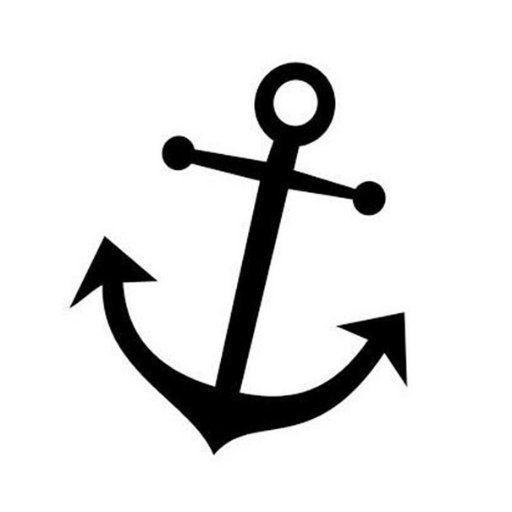
Is my situation bad or good?
“It depends.”
It depends on what are you comparing it to.
Comparing a situation to something worse is called “anchoring” and can help to put things in perspective and build gratitude.
In our household, we use the anchoring technique all the time. When something bad happens, the refrain in our house is: “Well, at least we’re not at Treblinka.” Or “at least we’re not living in a pit.” Harkening to the incredibly horrible situation that Jews found themselves in during the Holocaust, can provide perspective on the hardship we find ourselves struggling with. By educating ourselves more deeply about what happened during the Holocaust, we can appreciate what we have and live a more grateful life.
This year – 2020 – has given us so many opportunities to practice anchoring.
Can you remember the before times? It’s hard.
Those were days when we weren’t afraid of being near another human. Our glasses were not in a permanent state of fog because of a mask over our nose and mouth. We never even heard of Zoom.
2020 provided me plenty of opportunities to anchor my gratitude.
August – I tripped and fell, breaking my ankle and spraining the other one. This put me into 2 boots and a wheelchair for a month, and then a boot and crutches for another 3 months.

September – my leg swelled up like a balloon – it was a blood clot. Who gets a blood clot in their leg? That’s crazy.
November – Covid-19 came visiting. My son, husband and I all contracted the virus. At first, this gave us a scare because no one knows how his or her body will react to the virus. But our cases were “mild” with fever, chills, cough, fatigue, and the Covid-head fog. I was isolated in my bedroom for 5 days (that felt like a year) and was laid low for about three weeks.

One could argue that 2020, the last year of my 6th decade, was one of the worst years of my life.
But this is not how I feel. I feel that 2020 was one of the best years ever. On January 10, I will turn 60 and I am grateful to be alive and consider myself extremely lucky.
Without taking away the horror of the year – the sickness, so many, many death, the economic loss and pain, the loneliness, I want to anchor my experiences and make the case that I had a great 2020.
First, in January of 2020, my grandson, Teddy (Srulik) Goldberg, was four months old. Over the course of these past 12 months, I watched him development and grow from an infant who grasps rattles, to a toddler who walks, runs, climbs, eats food, says words, laughs, and has a smile so big that it melts your heart. The privilege of watching the miracle of his human development up close, as the Bubbi, has been a joy.
During the Pandemic I launched my 60 second flash briefing podcast – Gratitude in a Minute (please listen). This gave me the opportunity to allow gratitude to show up in my life every day and especially on days when there wasn’t so much to smile about. Recording these 60 second pieces serves as my gratitude journal, encouraging me to pause and appreciate. Today episode #274 plays.
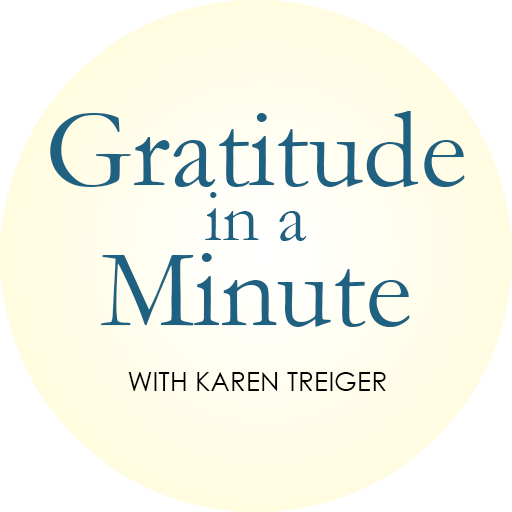
The great fall and the exploding leg brought physical pain and discomfort, but it also brought overwhelming messages of care, love and concern from friends and family. I couldn’t walk, buy my health was otherwise excellent and with some time and physical therapy, I will recover and regain full mobility. I am already walking on both my feet, just not 100% healed yet. This debacle helped me appreciate that ordinarily I take the working of my body for granted.
In September I was determined to meet the twins. I made it to New York (wheelchair assist – totally the way to go) and stayed for three weeks. Getting to spend time with these two babies, so different from each other, brought joy and a sense of awe.
Then in November, my mild case of Covid-19 granted me super-power antibodies. Taking advantage of my superpowers, I hopped on an airplane to New York and visited the twins for a week. I got to see how they had changed over the previous two months and got to again hold, feed and share the love.
Now as we get to kick this year in the ass and say goodbye. We can pause as we look in the rear-view mirror and ask ourselves if there is a way to frame this miserable year with some positivity? Ask yourself, what good things happened to me this year? You may surprise yourself.
It will be a rough winter, no question about that, but spring and summer are around the corner. As more people receive the Covid-19 vaccine, we will emerge from our homes and become reacquainted with one another and with the world around us. Let’s anchor our experiences to help us get to the other side with our sanity intact and with feelings of compassion and gratitude.

HAPPY NEW YEAR!
November 24, 2020
Stab-In-The-Back – Trump, Germany & Covid-19
“Stab-in-the-back” – this phrase creates a powerful image of cowardly violence and the worst type of military or political behavior. But the phrase takes on mythical meaning as it relates to the conspiracy theory of Germany’s defeat in World War I. The thrust of the German stab-in-the-back conspiracy theory, as articulated by Brett Stephens in an article in today’s New York Times, is “the German Army, though in retreat in the fall of 1918, could have kept up the fight had it not been betrayed by defeatist and scheming politicians who agreed to an armistice that November.”
This was a lie, but it was peddled to the German people who were hungry for some way to understand their nation’s humiliation and defeat. Germans understood the undertones of the announcement – that “’defeatist’ and ‘scheming’ almost always meant socialists, communist and Jews.” This big lie worked in Germany because, “it bucked up a humiliated nation’s pride and playing to its gut prejudices. . .. It also worked because it had a clear aim that a growing number of Germans shared, which was to overthrow the struggling Weimar Republic by claiming that it was founded on treason. In other words, it wasn’t just a conspiracy theory. It was a political weapon with the revolutionary aim of destroying democracy itself.”
I agree with Stephen’s assertion that the idea that the truth or falsehood of the matter is not the issue – it’s whether you can get enough people to believe the lie. The audience are those with underlying prejudices, biases, and political goals, that gives them a desire to believe it to be true.
Stephens has no trouble making the jump to the mess the U.S. finds itself in today. Our current big lie – that Trump didn’t lose the election – has created a dangerous reality for our democracy. Fifty-two percent of Republicans think that Trump ‘rightfully won’ re-election. The aim of this election fraud conspiracy theory is clear: “to treat the Biden presidency as a product of treachery by a political order that is so comprehensively corrupt that it will require far tougher means than the ones Trump employed to root out.” The fear with such stab-in-the-back lies given on a mass scale to a predisposed, receptive U.S. public is that “like a surf pounding against a bluff, abets future demagogues by eroding public confidence in democratic institutions, until, unprotected they collapse.”
****
Believing that there are no such things as coincidences in the world, today I had intended to begin blogging about a new book I am reading, The Hitler Conspiracies, by the historian Richard J. Evans. Evans takes five conspiracy theories and traces their origins and follows them through history.
One of the conspiracy theories that Evans explores is the German stab-in-the-back conspiracy of 1918. The origins of this conspiracy theory begin with Reichstag resolution by the Social Democrats, Left-Liberals and Catholic Centre Party on June 19, 1917 calling for “a negotiated peace, without annexation.” (Evans 57) The military saw this resolution as undermining the fighting troops efforts. And then a later resolution favor of a “negotiated peace” and an arch-conservative politician asserted that this resolution had ‘fallen upon the army from the rear.’” (Id.) This was the beginning of the stab-in-the-back myth.
This theory morphed into statements about how the war was being lost because of a depletion of armed forces due to “shirkers” and “deserters.” This depletion was encouraged by “pacifists and socialists who had been pressing vigorously for the war to be brought to an end.” (Evans 63) This campaign was a stab-in-the-back to the military and undermined the will to fight and brought about Germany’s defeat. (Id.)
After WWI, this conspiracy theory did not die out. Antisemetic German nationalists took up the banner. They had been declaring for some time that Jews were unpatriotic. This morphed into the Jews being the “shirkers” and the “deserters” who were to blame for Germany’s defeat in WWI. In 1919, German nationalists declared that “’Jewish influence’ had been the ‘driving force’ in the defeat of Germany. The Jews were a ‘foreign element’ in Germany, and the [Pan-German] League, as it had already done before the war, demanded the withdrawal of civil rights from the Jewish population.” (Evans 72)
Then in 1922, the Austrian writer Otto Weininger wrote, “It’s no use for the Jewish press to try and refute the ‘myth of the stab-in-the-back.’ You can provide and refute anything. But it’s become a fact that every German has it in his blood: Prussianism and heroism belong together, just as Jewdom and defeatism do.” (Evans 73)
Though specific to the antisemetic version of the stab-in-the-back conspiracy, Weininger’s statement shows how any pack of lies can become a powerful force of “truth.” “You can provide and refute anything,” Weininger declares. If it’s stated repeatedly and loudly it becomes “fact.” I feel this is the world we live in – if lies and falsehoods are repeated loudly and forcefully, people believe it to be true. And the truth becomes irrelevant. This is why 52% of Republicans believe that Trump won the election. This is why so many in this country believe that Covid-19 is a hoax.
Last week I heard an radio interview with an ICU nurse who decided to quit her job because she could no longer take the stress and anxiety of her daily patient care. She was completely exasperated with how lies become truths for people and no matter what the reality, they cannot change the perceived truth in their mind. She reported that she had a patient with Covid-19 who refused to believe his diagnosis because he firmly believed that Covid-19 is a hoax. For her that was the last straw.
I can assure you, Covid-19 is no hoax. I am currently recovering from the virus myself.
Stay safe and healthy.
SOURCES:
New York Times, Trump Contrives His Stab in the Back Myth, by Brett Stephens. November 24, 2020.
Evans, Richard, J., The Hitler Conspiracies, Oxford University Press, New York (2020).
November 13, 2020
Esther Goldberg’s 23rd Yahrtzheit
My mother-in-law, Esther Breindl (Wisznia) Goldberg was born in a different time and a different land. I was born in Seattle in 1961, so it’s hard for me to imagine the Polish Shtetl Stozcek (Stok) in 1920 when Esther was born. Poland saw many wars, but the Jews of Stozcek lived a quiet life in sync with the rhythm of Jewish tradition and calendar – a way of life that was erased by the Nazis.
Tonight and tomorrow we commemorate Esther’s Yahrzheit (anniversary of her death). It’s been twenty-three years since she left us.
[image error]Yahrtzheit Candle
Esther was the second child (of 5) born to the Wisznia family. The Wisznia family lived in a small one room, wooden, home, on a quiet, dirt street, just down the corner from Chana’s bakery. Their home didn’t have electric lights or indoor plumbing. It was lit at night with kerosene lamps and there was an outhouse. They didn’t own a horse and buggy, so their method of transportation was by foot. Esther’s father was a Melamed, a teacher of young children. Their home was filled with love and the smells of Jewish cooking (plenty of schmaltz).
[image error]
Esther attended school – Polish public school and Beis Yaakov (Jewish school for girls). Her mother taught her to sew and she gained much expertise in sewing shirts, dresses and undergarments, which she sold at the town’s market. It was a simple, but happy life, that was steeped in thousands of years of Jewish tradition.
The war that ended it all, began September 1, 1939. The Wisznia family fled to the eastern, Soviet-controlled side of Poland and lived there until August of 1941. It was then, just outside of Slonim, that Esther’s four siblings and her parents were shot into a pit by the SS Einsatzgruppen B. Esther survived because she was in the hospital, ill with typhus.
How best to remember Esther? I remember her as laughing with a full throated joyful laugh. I remember her sweetness with her grandchildren. I remember the smell of her kitchen. I remember the sound of her Eastern European accented English. I remember her crying on the balcony. I think how proud and happy she would be to know that she has six great-grandchildren (newest one joined us this week!). But as I remember Esther, I also remember the suffering of the war years. I want to also remember her parents and siblings who were murdered in cold blood.
I’ve been thinking about how to honor and remember Esther’s parents and siblings, who I, of course, never met. I began to think about and appreciate the way that the Black Lives Matter Movement focuses on remembering those who were shot by police – by saying their name. Cries of George Floyd, Breonna Taylor, Ahmaud Arbery and many others can be heard at the rallies and protests. I find it very powerful and moving to hear or say their names. It keeps their memoires alive and motivates change.
[image error]
Besides encouraging me to face the systemic racism in our country, the names cried out in such pain make me think of those murdered in Esther and Sam’s family – the Grandparents, Aunts, Uncles, and cousins that my husband, Shlomo, and his two sisters, never knew. This is not to equate the Holocaust with the Black Lives Matter Movement, but just to share this powerful idea of calling out someone’s name. I’ve been part of Holocaust memorial ceremonies where thousands of Holocaust victims’ names are read aloud – one after another – it’s numbing.
But to share just a few that were loved and important to my mother-in-law, seems a beautiful thing to do on her Yahrzheit.
So, today, I strive to honor and keep the memory of Esther Breindl (Wisznia) Goldberg alive and present in the world. I wish also to keep alive the memory of her parents and siblings, who were treated like animals and murdered in cold blood in August of 1941.
I SAY THEIR NAMES:
Zalman Wiznia (father)
Bracha Wisznia (mother)
Yisroel Yosef Wisznia (older brother)
Leizer Yitzchok Wisznia (younger brother)
Sheina Wisznia (younger sister)
Shimon Wisznia (youngest brother)
ת נ צ ב ה
May their souls be bound in the bond of eternal life.
[image error][image error]
[image error]
Esther Goldbrg’s 23rd Yahrtzheit
My mother-in-law, Esther Breindl (Wisznia) Goldberg was born in a different time and a different land. I was born in Seattle in 1961, so it’s hard for me to imagine the Polish Shtetl Stozcek (Stok) in 1920 when Esther was born. Poland saw many wars, but the Jews of Stozcek lived a quiet life in sync with the rhythm of Jewish tradition and calendar – a way of life that was erased by the Nazis.
Tonight and tomorrow we commemorate Esther’s Yahrzheit (anniversary of her death). It’s been twenty-three years since she left us.
[image error]Yahrtzheit Candle
Esther was the second child (of 5) born to the Wisznia family. The Wisznia family lived in a small one room, wooden, home, on a quiet, dirt street, just down the corner from Chana’s bakery. Their home didn’t have electric lights or indoor plumbing. It was lit at night with kerosene lamps and there was an outhouse. They didn’t own a horse and buggy, so their method of transportation was by foot. Esther’s father was a Melamed, a teacher of young children. Their home was filled with love and the smells of Jewish cooking (plenty of schmaltz).
[image error]
Esther attended school – Polish public school and Beis Yaakov (Jewish school for girls). Her mother taught her to sew and she gained much expertise in sewing shirts, dresses and undergarments, which she sold at the town’s market. It was a simple, but happy life, that was steeped in thousands of years of Jewish tradition.
The war that ended it all, began September 1, 1939. The Wisznia family fled to the eastern, Soviet-controlled side of Poland and lived there until August of 1941. It was then, just outside of Slonim, that Esther’s four siblings and her parents were shot into a pit by the SS Einsatzgruppen B. Esther survived because she was in the hospital, ill with typhus.
How best to remember Esther? I remember her as laughing with a full throated joyful laugh. I remember her sweetness with her grandchildren. I remember the smell of her kitchen. I remember the sound of her Eastern European accented English. I remember her crying on the balcony. I think how proud and happy she would be to know that she has six great-grandchildren (newest one joined us this week!). But as I remember Esther, I also remember the suffering of the war years. I want to also remember her parents and siblings who were murdered in cold blood.
I’ve been thinking about how to honor and remember Esther’s parents and siblings, who I, of course, never met. I began to think about and appreciate the way that the Black Lives Matter Movement focuses on remembering those who were shot by police – by saying their name. Cries of George Floyd, Breonna Taylor, Ahmaud Arbery and many others can be heard at the rallies and protests. I find it very powerful and moving to hear or say their names. It keeps their memoires alive and motivates change.
[image error]
Besides encouraging me to face the systemic racism in our country, the names cried out in such pain make me think of those murdered in Esther and Sam’s family – the Grandparents, Aunts, Uncles, and cousins that my husband, Shlomo, and his two sisters, never knew. This is not to equate the Holocaust with the Black Lives Matter Movement, but just to share this powerful idea of calling out someone’s name. I’ve been part of Holocaust memorial ceremonies where thousands of Holocaust victims’ names are read aloud – one after another – it’s numbing.
But to share just a few that were loved and important to my mother-in-law, seems a beautiful thing to do on her Yahrzeit.
So, today, I strive to honor and keep the memory of Esther Breindl (Wisznia) Goldberg alive and present in the world. I wish also to keep alive the memory of her parents and siblings, who were treated like animals and murdered in cold blood in August of 1941.
I SAY THEIR NAMES:
Zalman Wiznia (father)
Bracha Wisznia (mother)
Yisroel Yosef Wisznia (older brother)
Leizer Yitzchok Wisznia (younger brother)
Sheina Wisznia (younger sister)
Shimon Wisznia (youngest brother)
ת נ צ ב ה
May their souls be bound in the bond of eternal life.
[image error][image error]
[image error]
November 11, 2020
Try this version of the cartoon video – let’s hope.
I got a note that the video I posted says it’s private. I’ll fix that, but in teh meantime, see if you can watch it through this link.
https://1drv.ms/v/s!As-JOU-SUEx8iN8KnBeIp9Ymn1KuMA?e=LeHasI
Cartoon/Graphic Art Video – Sam and Esther’s Story and Gratitude
Check out this seven minute video. It takes an audio clip from a podcast interview by Valeria Teles form her podcast Fit for Joy and turns it into a Cartoon. It’s really great. Please share this around because is a way to spread part of Sam and Esther’s story and the message of gratitude in a creative and fun way.



